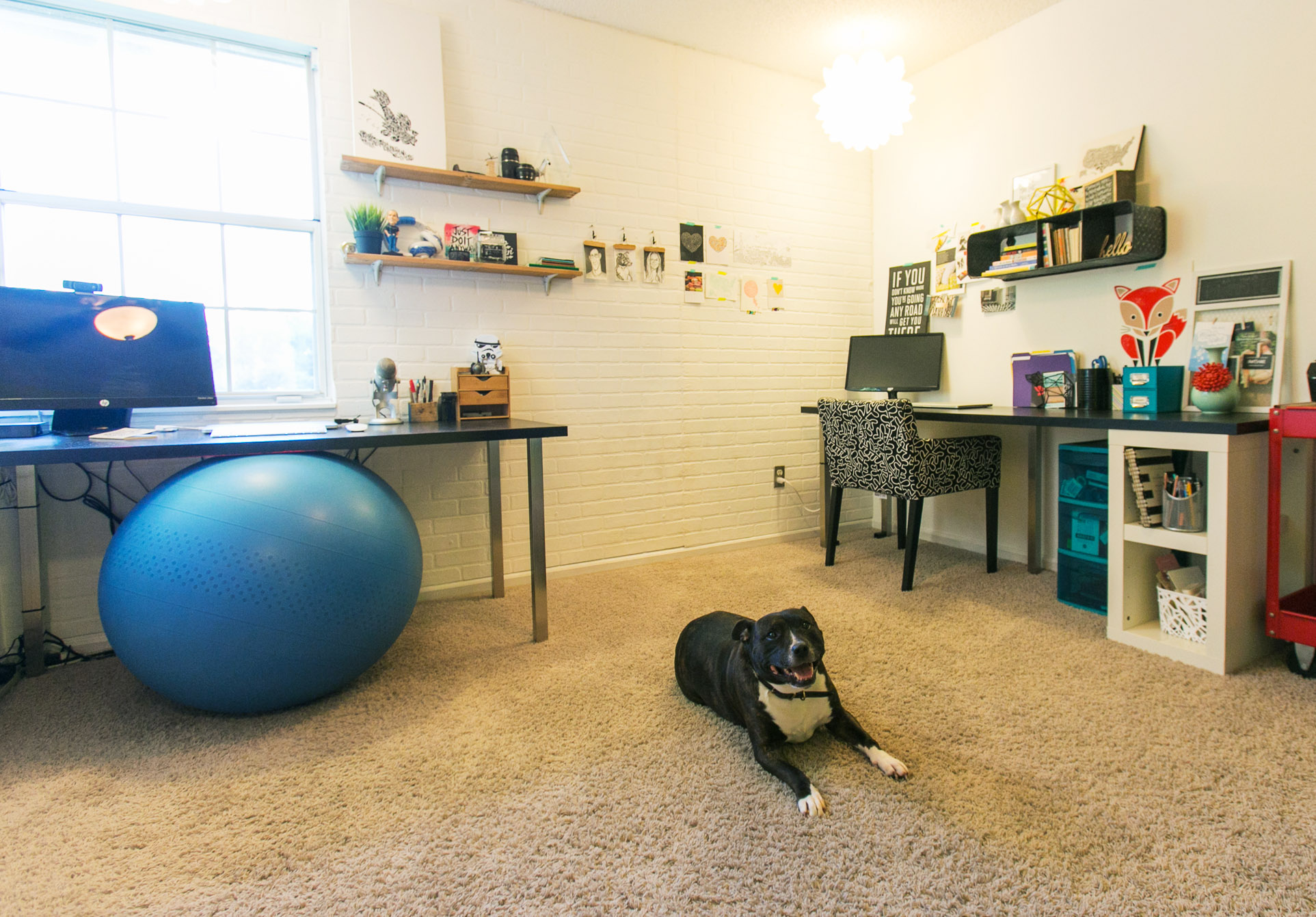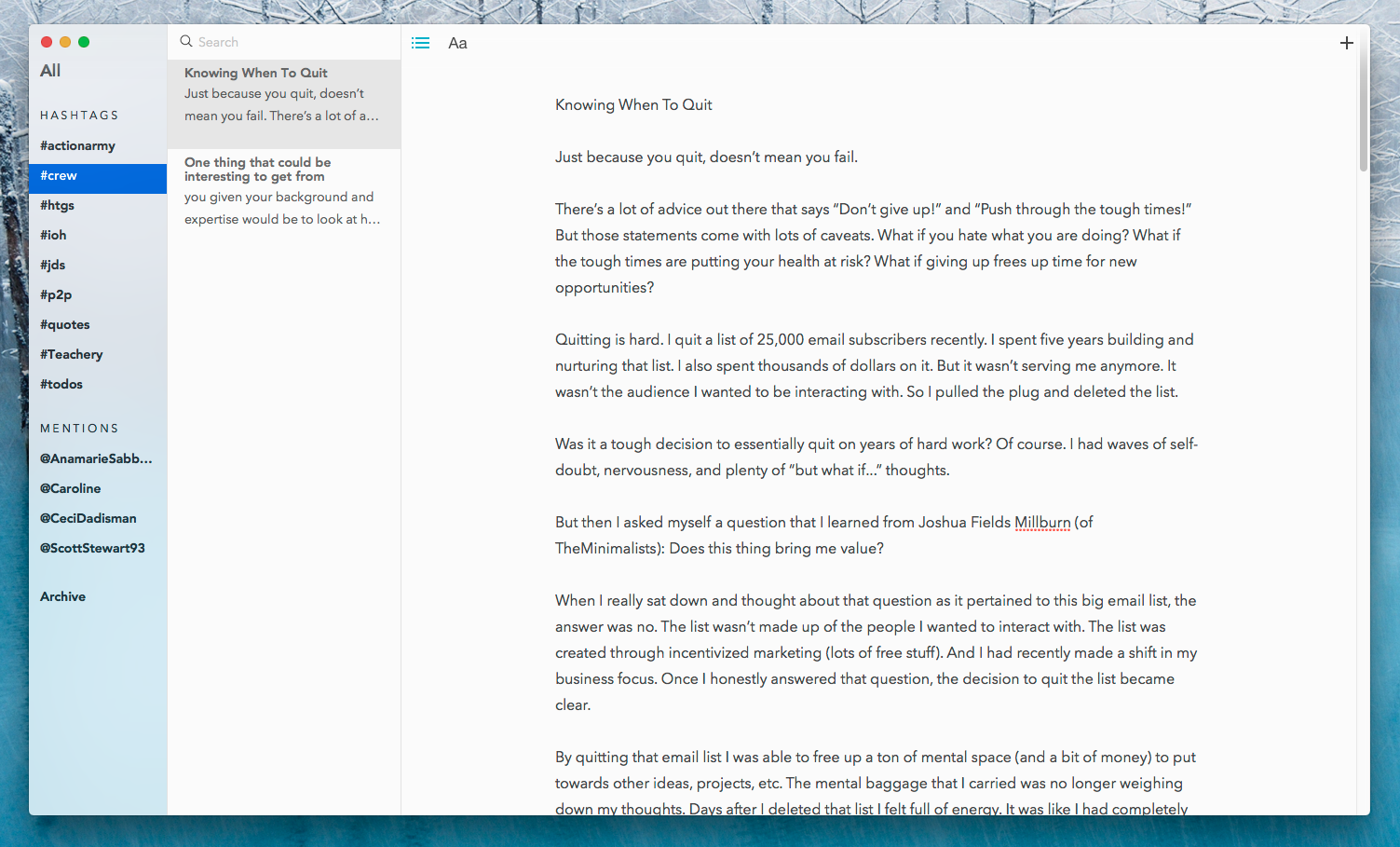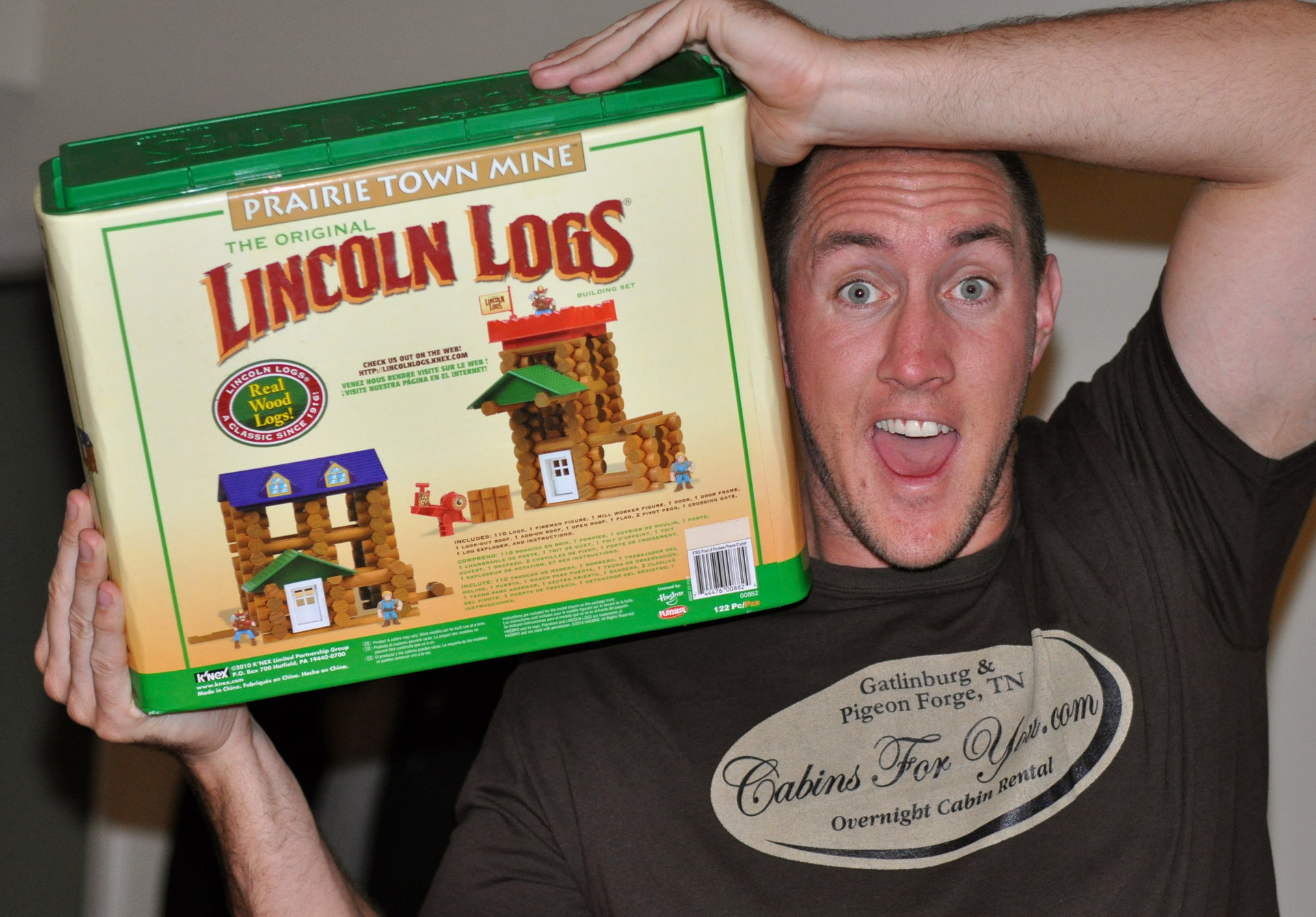
Jason Zook is best known for being the guy that made over $1,000,000 wearing t-shirts for a living and selling his last name (twice). Now, he’s selling his future.
Writing didn’t come naturally to me, therefore I had to set daily intentions.When I decided I wanted to write more consistently, I sat down at my laptop one day and popped open a Word doc. I stared at the blinking cursor on that blank white page for what felt like forever. That’s about the time that I disappeared into the catacombs of YouTube.
I was begging to be distracting by anything that didn’t feel like that Mount Everest of Word docs. Writing seemed daunting. I wasn’t a “writer.” What business did I have writing? Sure, I had experiences I wanted to share throughout my entrepreneurial journey, but to just sit down and write? Not for me.
Just one week after I’d officially decided I wasn’t a writer, I heard a talk from my friend Joshua Fields Millburn. In that talk he mentioned the idea of “just sitting in the chair” and writing, no matter what.
I’m fairly certain he mentioned something about writing 500 – 1,000 words per day. 1,000 words per day? Was that the length of a novel? That seemed insane!
But, still I decided I’d give it the old college try. I cracked open Word shortly after hearing his talk and just started typing. About every four minutes I highlighted the words I’d written to check the word count.
I found myself slightly disappointed when the number was only 27, or 58, or 149. I wish I had some hilariously awful .docx file to attach to this article for you to laugh at. But alas, I believe I deleted those first bits of writing faster than you can say the word delete. (Be honest, did you just try to say the word delete again?)
What I did do though, was develop a habit. Every day, first thing, I would write 500 – 1,000 words. And if you’re wondering, yes, I quickly realized how awful Word was and moved to Mac’s native app TextEdit. I actually have a file dated August of 2013 that never saw the light of day:

Whether my writing was good or bad, I stuck with it. Each day I would force myself to write at least 500 words. The funny thing that happened? Almost every single day I ended up writing 1,000 – 1,500 words.
That simple daily practice helped me find my writing voice (which will always be evolving) and helped give me confidence in my writing.
It becomes easier to write when you know you have to do it tomorrow
Because of my daily writing intention, the pressure to write something amazing quickly deteriorated. Early on I’d sit down and think, “Okay Jason, you have a Pulitzer Prize caliber article in you, just let it out!” Then I figured out that I didn’t give a crap if my writing ever won awards or read as professional writing; I just had to stick to my daily goal.
It couldn’t have been more than a couple weeks writing every day when almost all the self-doubt about how good my writing was disappeared. It wasn’t that I suddenly gained confidence in my writing. (Or that it was any good.) Not even close. It was that I knew I would be sitting in the chair every day, so why worry about today’s writing when I’m just going to have to write something again tomorrow?
Once I got over the hump of self-doubt, each day’s writing became an achievable task. I simply wrote about a topic until I couldn’t write about it anymore (or until I knew I was over 500 words written and could go do something else). Some days I couldn’t think of anything to write about, so I’d write something that started like this:
This is me sitting down in the chair to write. The chair I’m sitting on isn’t actually a chair. It’s a big blue yoga ball. Sometimes I wonder if the yoga ball is just going to pop one day (that would be painful and embarrassing).
Why sit on a yoga ball? I think I read in a Men’s Health article it was good for my core. Funny enough, I may not even have read that. I may have just heard it somewhere. And do I have any clue if my core has benefitted from sitting on a blue yoga ball? Nope. But alas, I continue to do it.
I can’t think of anything to write about today. I won’t mentioned what I wrote about yesterday as that would feel like cheating. If I’m being honest, right now I’m thinking about writing about my favorite types of breakfast. Waffles, french toast, etc. But who cares what I think about breakfast? Then again, who cares what I think about marketing and entrepreneurship? Oh boy, here comes the self doubt train. Choo! Choo!
(And now a photo of my dog Plaxico and said blue yoga ball…)

Truthfully, that’s probably nearly verbatim of something I wrote on many days. I didn’t have a list of topics and I didn’t really care. All I wanted to do was write.
And while I’m being truthful, I often enjoyed those nonsensical writing days more than I enjoyed the “tips on how to overcome your fears” articles I wrote.
Finding the right writing app makes a difference
I already admitted that I started writing in Word. Oh, I forgot to mention I use a Mac, so Word for Mac, yeah, that’s like 10 times worse now. Anyway, once I moved from Word to TextEdit, I stayed there for awhile.
TextEdit removed all the distracting bells and whistles. I could still format my writing slightly (bold, italics, font sizes) and even get lost in the world of picking random fonts to write in. But it’s a fairly feature-free writing tool.
However, there was one small thing that always bothered me: The damn margins. If you’ve ever used TextEdit, you might know what I’m talking about. Those little arrows that slide around the top of the document drove me insane, especially when I randomly grabbed one and half my article got malformed. Ugh, such a #firstworldwritingproblem, I know.
Nonetheless, I moved on from TextEdit to a very sophisticated software. One I actually was already spending a lot of time writing in: Mac Mail.
Sounds silly, right? To use Mac Mail as a daily writing program? Well, it was and it wasn’t. I liked Mac Mail because it was also fairly limited on the formatting and buttons. And while writing, it automatically saved a draft of the email.
What I didn’t like was the fact that with every email I received, I left ‘Writing Land’ and took a trip to Emailsville. Those trips were almost always one way.
Believe it or not, I stuck with writing in Mac Mail for over a year and a half. Towards the end of that time I started writing in Google Docs. But because I had to be online to write in Google Docs, I always felt the itch of distraction. Facebook was only a tab away! Twitter was a mere command + T and then type the letters “Tw” to have my history pulled up: Twitter.com/notifications. There were just too many opportunities to get out of my chair (virtually) to stick with Google Docs.
Then I found LETTERSPACE. Oh Letterspace, you sexy, sexy beast.

Letterspace is my, for now, perfect writing app. You can easily separate articles with hashtags and @ signs. You can archive articles. You can search words throughout all articles. It writes in markdown language, so there’s almost no formatting whatsoever.
The only button in the app is a “+” button that allows you to create a new article (only newbs click that, I’m all up on the command + N game). And it magically auto-saves while you’re writing (online or off). I think it also syncs between the desktop and iPhone app, but I never write on my tiny iPhone screen.
Oh, and Letterspace is a mere $9.99. I love that it has created an environment that’s conducive to writing for me. And for under $10? That’s a no-brainer.
A copy editor is your friend
At the end of 2014 I made a commitment to myself. I had used an amazing editor to help me write my book and there was one huge takeaway from that experience: A great editor gives me the ability to just dump all my thoughts into a somewhat coherent document. Then, they can just drop in and help turn it into something much better.
I like to think of working with a copy editor like a little kid trying to build a house with Lincoln Logs. Remember those?

I, being the little kid, do my best to stack the little logs (words) into what should be a house (finished article). Some logs go the wrong direction. Some logs get jammed where they don’t fit. But to my credit, when I’m done I have something that resembles a house (mostly).
A great copy editor is like your Mom. She swoops in and straightens all the crooked logs. She flips the ones around you put in the wrong way. And she generally cleans up the surrounding area to make the little log cabin (my article) shine like a diamond. Because we all know great log cabins shine like diamonds.
I have to give a shout out to the two editors I’ve worked with. One, Lizzie Vance, is more than a copy editor. She’s a full on book authoring coach. Without her, who knows what type of randomness I would have tried to pawn off as a book. And two, Ashley Bright, my copy editor for 98 percent of all my articles for the past eight months.
Copy editors aren’t cheap, but they also aren’t expensive. I pay anywhere from $100 – $300 depending on the amount of writing I’m doing. It’s worth every penny to me, because I know that if I just get my thoughts down, Ashley will come in and fix my log cabin right up!
Consistency brings confidence, confidence brings results
I’m not one of those people who has a site that gets millions of pageviews every month. In fact, as of writing this article, I’m only on pace for 200,000 page views in 2015.
Now, that’s definitely not bad, but my point is that I don’t define results just by pageviews.

You see, two years ago I’d had my writing syndicated to publications like Forbes and Entrepreneur.com, but it wasn’t really my writing. I essentially wrote articles for an entrepreneurial group and then randomly one of my articles would get published under the group’s name.
My name was still in the byline, but that’s very different than writing an actual column for a publication (or having them reach out to republish an article from your site!)
Writing consistently over the years has made me realize my writing is good enough. It’s impactful for certain people, and I write the exact way I want to write.
That confidence in my writing has landed me a (paid) weekly column with Inc.com. A syndicated column with The Next Web. Paid writing on The Crew Blog. And various republishing opportunities to BusinessInsider.com, CNBC.com, and more.
While those opportunities haven’t changed my life, they’ve certainly put dollars in my bank account and put my writing in front of hundreds of thousands of entrepreneurs. Plus, I’d be lying if I said it wasn’t cool to see an article I’ve written on the front page of “important” websites. Remember, not too long ago, all I was writing about was my blue yoga ball.
Writing has legitimately changed my life
I’ve seen the benefits of my writing time and time again. I’m not talking about the money. I’m not talking about the digital pats on the back.
I’m talking about the people who email me and say that my writing had a profound impact on them. Or that my writing gave them the courage to make a big leap in their lives. Or the countless emails from people around the planet who have read my book and said it was the exact thing they needed in their lives at that time.
The feelings I get from those types of emails are unlike anything else in my life. They warm my heart and remind me that my words matter (especially during the times when I just can’t seem to finish a damn thought or find the most coherent way to express myself through letters and sentences.)
I believe I am a better person because of the 800,000+ words I’ve written in the past two years. I also know that I’ve honed a skill and one I hope to put to continued use for years to come. I quietly committed to releasing my next book in 2016. We’ll have to see how that goes.
Lastly, you need to take breaks
This brings us to present day where I’m taking a writing sabbatical for two months (July and August).
I haven’t hit the lottery. I don’t have some mysterious money-making scheme going on right now that’s filled my bank account. But if I waited for those things to happen to take a break, a break would probably never come.
I’m intentionally taking a break when it isn’t the perfect time, because sometimes that’s when you need it most.
I do have some paid writing I’ll be (gladly) finishing up, but I want to give my writing brain a rest. I want to focus my time on reading more books and shoring up a few projects. I also want to spend less time sitting at my computer and more time seeking out new adventures. One of which will be a three-week road trip from San Diego to Vancouver Island.
800,000+ words later, it’s finally time for me to take a break from my writing, but this could be the perfect time for you to start.
Maybe you feel like you’re where I was in those early days, staring at the Mount Everest of blank pages. Maybe you don’t think you could ever consider yourself a writer. If that’s the case, I’d like to do for you what my friend Joshua did for me: encourage you to sit in the chair, form the habit, and just keep writing. You never know what may come of it.
For the past two years, I’ve written about 1,000 words almost every single day. I know it averages out to about 1,000 words because my typical first draft for any article gets written in about one hour and ends up being around 2,500 words.
Take away weekends, holidays, and days when I simply felt I had nothing to write about, and I strongly believe I’m left with a daily average of 1,000 words since June of 2013. Add in my 60,000-word book Creativity For Sale and we’re over 800,000 words written.
Get the TNW newsletter
Get the most important tech news in your inbox each week.




